Dwarf hair grass is a great plant for the aquarium. It is a carpet plant that will quickly cover the bottom of your tank, and it is very easy to care for. In this comprehensive guide, we will discuss everything you need to know about dwarf hair grass, from its benefits, care, requirements, buying, planting as well as solutions to common problems. This A – Z guide will get your dwarf hair grass thriving in your tank in no time!
Dwarf hair grass is a species of plant in the Cyperaceae family. There are two main types of dwarf hair grass – Eleocharis Acicularis and Eleocharis Parvula. The difference between the two varieties is that Acicularis is curlier at the tip and darker in color.
Dwarf hair grass is native to North America, Europe, Asia, and South America. It is a popular choice for aquariums, terrariums, and Paluduriums. With proper care, dwarf hair grass will thrive and provide your home with a splash of green!
Why Should You Have Dwarf Hair Grass? It’s Benefits
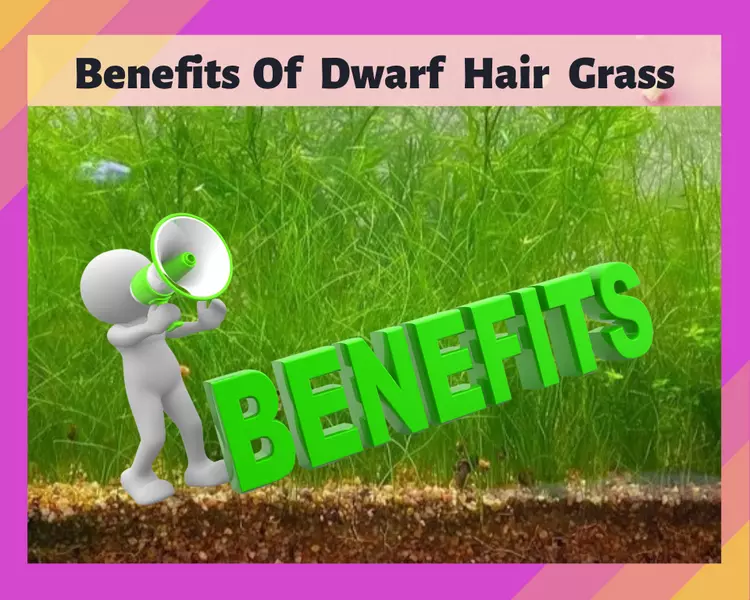
Easy To Procure: If you’re looking for an inexpensive and easy-to-care-for plant, dwarf hair grass is a great option. This type of grass is a budget-friendly choice. With its low price and low care requirements, this aquarium carpet plant is sure to be a hit.
Can Be Used In Different Sets Up’s: Dwarf hair grass is a popular plant for both aquariums and terrariums. It can also be used in aquariums, which are a type of terrarium that includes both aquatic and terrestrial features.
Whether you are looking to add some greenery to your aquatic setup or create an entire forest floor in your terrarium, dwarf hair grass is a versatile and easy-to-care-for plant that is sure to thrive.

Moving Ecosystem: There’s something strangely calming about watching fish swim. Perhaps it’s the gentle undulations of their bodies as they move through the water or the soothing ripple of the waves they create.
Whatever the reason, there’s no doubt that aquariums can be a source of relaxation and enjoyment. And one of the best ways to add interest to an aquarium is to include some dwarf hair grass. This type of grass is known for its delicate, moving strands, which wave gently in the water currents.
As a result, it provides a constantly changing landscape for fish to explore and play in. What’s more, the soft grass makes a perfect hiding place for shy or skittish fish. So if you’re looking to add a little bit of interest to your aquarium, consider adding some dwarf hair grass.

Exhales Oxygen: Dwarf Hair Grass is a popular plant for aquariums because it provides several benefits for both fish and other aquatic plants. Like other aquatic plants, Dwarf Hair Grass exhales oxygen which the fish need.
During photosynthesis, the plant cells use sunlight to convert carbon dioxide into oxygen. The oxygen is then released into the water, where it is used by the fish. In addition to providing oxygen, dwarf hair grass also helps to keep the water clean by absorbing excess nutrients.
As a result, dwarf hair grass is an important part of a healthy aquatic ecosystem.
Absorbs Carbon-dioxide: As anyone who has kept fish as pets know, they require a carefully balanced environment to thrive. One of the most important factors is the level of dissolved oxygen in the water.
Fish breathe oxygen, and if the level gets too low, they will suffocate. That’s where dwarf hair grass comes in. This plant is unique in its ability to absorb large amounts of carbon dioxide and release oxygen.
As a result, it can help to raise the dissolved oxygen levels in a body of water, making it more hospitable for fish.

Purification: The roots of the dwarf hair grass help to anchor it in place and provide shelter for small fish and invertebrates. The dense network of blades also helps to filter water and remove impurities and help contain the nitrates.
As a result, Dwarf Hair Grass can play an important role in maintaining a healthy aquarium environment. In addition, the grass helps to oxygenate the water and thereby reduce algae growth.
As a result, is an important part of a healthy aquatic ecosystem.
Shelter To Fish: Dwarf Hair Grass is a popular choice for aquariums and ponds because it provides many benefits to the fish and other aquatic life. If you’re an aquarium owner, you’ll know the importance of providing your fish with shelter and hiding space.
One of the best plants for this is dwarf hair grass, which not only provides a place for your fish to hide but also offers scope for breeding and spawning. It grows in dense mats that offer shelter to small fish and fry.
The thick grass also provides a safe space for breeding and for fish to lay their eggs.

Vibrant Addition & Lush Green Carpet:
With its vibrant green color and compact growth, Dwarf Hair Grass is a popular choice for aquascapers. Once established, this plant forms a dense mat of grass-like leaves that are perfect for creating a naturalistic underwater scene.
Whether you are looking to add a splash of color or create a realistic environment, Dwarf Hair Grass is an excellent choice for the aquarium.
What Does The Dwarf Grass Need?
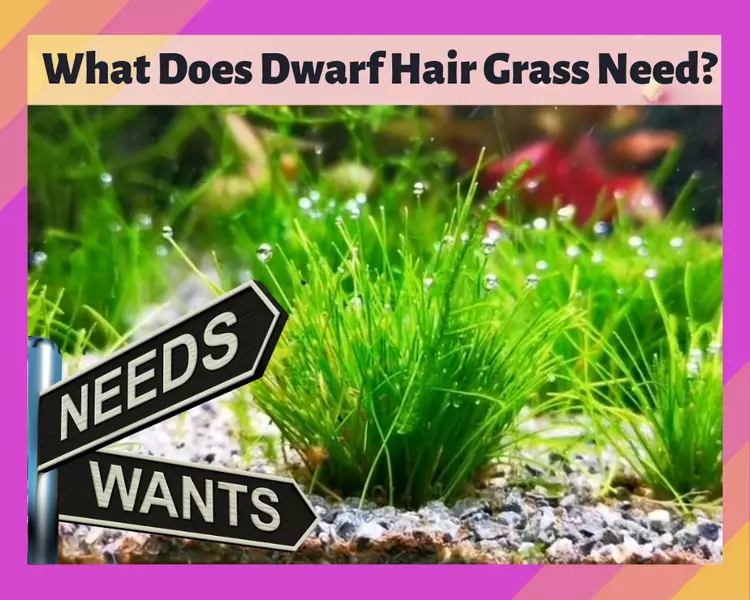
Temperature: When it comes to Dwarf Hair Grass, there’s no need to tiptoe around the subject of water temperature. This versatile plant can survive in a temperature range of 50 to 85 degrees.
Whether you’re looking to add a splash of greenery to your fish tank or want to create a jungle-themed terrarium, Dwarf Hair Grass is a plant that can handle a variety of different temperatures.
Water Hardness: When it comes to water hardness, Dwarf Hair Grass is pretty darn versatile. It can withstand a water hardness of anywhere from 2 to 10 dH. To put that into perspective, normal water hardness levels fall between 0 and 4 dH.
So, Dwarf Hair Grass can survive in slightly hard water (4 to 8.5 dH) and even hard water (8.5 dH and up). In other words, if you’re looking for a plant that can thrive in a wide range of water conditions, Dwarf Hair Grass is a good option to consider.

pH Levels: Although Dwarf Hair Grass is a sturdy plant that can withstand a range of temperatures and water hardness, its tolerance to pH is pretty minimal. Dwarf Hair Grass can only tolerate a pH range of 6.5 to 7.5.
In fact, the pH may vary within this range throughout the day. So, if you’re looking to add some Dwarf Hair Grass to your aquarium, make sure you keep a close eye on the pH levels!
Tank Size: Dwarf hair grass is a type of grass that can be used in both small and large fish tanks. This is because the grass comes in small bunches and can be planted as per your needs. Just ensure that your tank does not have strong waves, that can hurt the grass and uproot them.
Lighting:
One of the most important things you need to know about keeping dwarf hair grass in your aquarium is that it needs good lighting. Low lights are simply not sufficient to encourage photosynthesis.
The lighting also needs to be pretty strong, over 60 PAR. And it needs to be on for 10-12 hours each day. Providing the right lighting for your dwarf hair grass is essential to keeping it healthy and happy.
[PAR stands for photosynthetic active radiation – Don’t worry too much about it. Just type it on amazon or ask your local aquarium store.]

Substrate: Dwarf hair grass is a popular choice for many aquariums because of its lush look and its relatively easy care. This grass grows best in a rich substrate that provides nutrients and allows the roots to spread.
Some people choose to add a layer of rich soil under their sandy substrates to provide an extra boost of nutrients. While dwarf hair grass does need a sandy substrate to thrive, its gentle roots can’t penetrate hard substrates like gravel.
As a result, this grass is best suited for aquariums with soft substrates. With a little care, dwarf hair grass can add a touch of elegance to any aquarium.
Additional Co2:
Dwarf hair grass is a common plant in aquariums and does not require CO2 as an additive. However, if you do add CO2 to the tank, the dwarf hair grass will love it and do much better.
The main benefit of adding CO2 to the tank is that it will help the plants to grow faster and be healthier. However, adding co2 to your tank has to be done carefully with professional advice as it can harm your fish.

Selecting & Buying Dwarf Hair Grass – What To Look For?
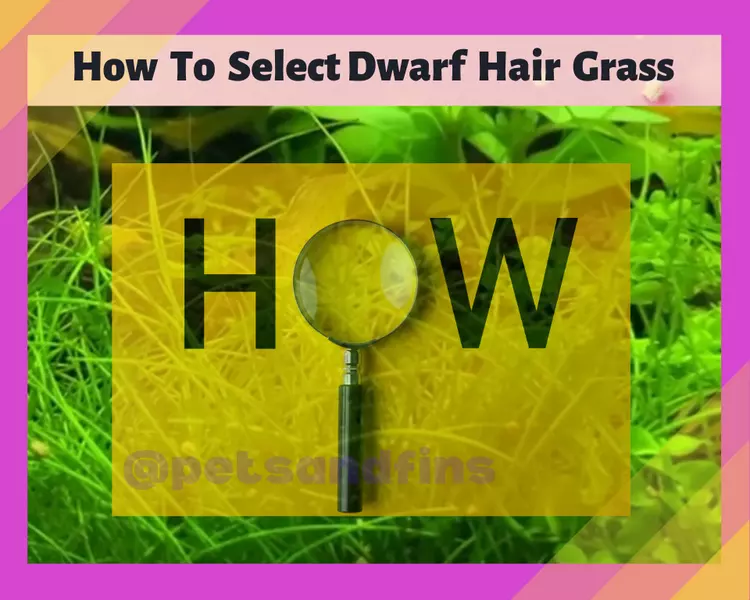
Bright & Formed Blades: Aquarium Dwarf Hair Grass is a beautiful plant that can add color and interest to your aquarium. When choosing this plant, it is important to select one that has bright, formed blades.
They should not be broken or damaged in any way. These tips are not merely decorative but indicate the health of the plant.
Avoid Brown Leaves: When selecting dwarf hair grass for your aquarium, avoid brown leaves, as this reflects a lack of chlorophyll and improper photosynthesis. Instead, look for healthy, green leaves that are free of disease or pests.
Drooping Leaves: When choosing Dwarf Hairgrass, be sure to select a healthy plant with lush, green leaves. Drooping leaves are a sign of ill health and should be avoided. In addition, be sure to purchase Dwarf Hairgrass from a reputable source to ensure that your plant is healthy and free of disease.
With proper care, Dwarf Hairgrass will thrive in your aquarium and provide years of enjoyment.

No Holes: It is important to avoid plants that have holes in the leaves. These holes are caused by a variety of factors, including pests, disease, and stress.
While they may not necessarily harm your fish, they can be unsightly and may indicate that the plant is not as healthy as it could be.
So when choosing dwarf hair grass for your aquarium, be sure to inspect the leaves carefully to ensure that they’re free of holes.
Color: When it comes to choosing the right plants for your aquarium, color is one of the most important factors to consider. The brightness of the foliage can indicate the health of the plant, and you want to make sure that your plants are as healthy as possible.
However, don’t get confused if you see two types of dwarf hair grass that look different in color. One type may be lighter than the other, but as long as the overall grass is bright and vibrant, it’s perfectly fine.
The important thing is that the plant looks healthy, so focus on choosing a grass that has lush, green leaves.

Roots: While selecting dwarf hair grass for your aquarium, it is important to inspect the roots. They should be long and white, with no damage or deformities. If the roots are healthy, the plant will be better able to absorb nutrients.
By taking the time to select a high-quality plant, you can ensure that your aquarium is beautiful and healthy.
Upright: When selecting dwarf hair grass for your aquarium, it is important to check for early signs of bad health. One of the first things you should look for is if the plant is drooping. If the plant is drooping, this is an early sign of bad health and it is best to select another plant.
How To Plant Dwarf Hair Grass? What Should You Know?
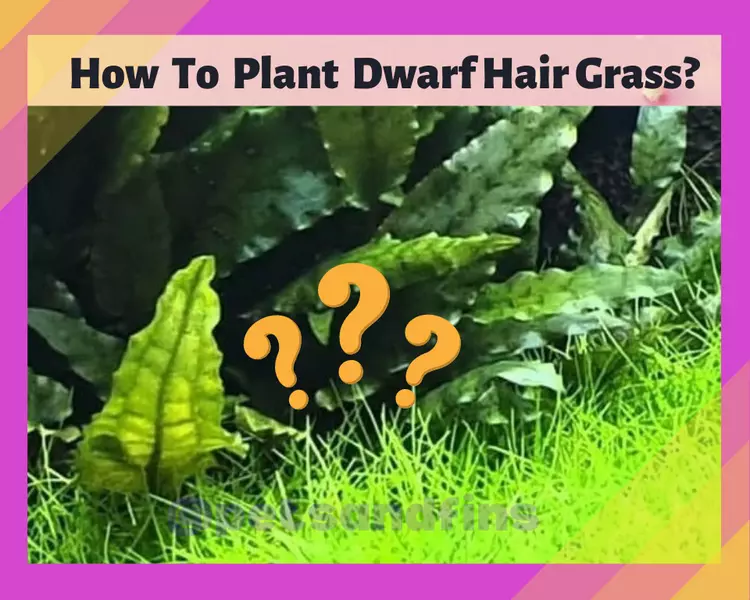
Soft Sandy Substrate: The first thing you need to know about planting dwarf hair grass is that you need a soft, sandy substrate. This is because the roots of the plant are delicate and can easily be damaged.
In addition, a firm substrate will help the plant to anchor itself in place.
Depth: The substrate must have a depth of a minimum of one inch. This helps the roots flex without breaking, which is important for the health of the plant.
Without sufficient root space, the plant will quickly die or have stunted growth.
Soil: Although soil is not strictly necessary for this plant, adding a layer of nutrient-rich soil will render a great benefit.
It will aid the growth and provide fertility. If you are interested in adding a layer of soil to your aquarium, be sure to choose a type that is safe for use in aquaria.

Placement: Planting dwarf hair grass in an aquarium can create a stunning carpet of green, but it does require some careful planning.
Split the grass bunch into small clumps and plant them two inches apart. Over time, the gaps will get covered.
Some recommend box-shape planting which will ensure even growth. Box shape planting involves inserting the grass in four corners like a square with one in the center. But this is dependent on your layout.
Rooting: When planting dwarf hair grass, it’s important to ensure that the roots go below the substrate and the grass stays above. This can be a bit tricky, but it’s essential for ensuring that the grass grows properly.
Once the grass is in place, you can simply sit back and enjoy the natural beauty of your aquarium.

Aesthetics: When it comes to planting, from an aesthetic perspective, it’s generally a good idea to plant the taller grasses at the back of the tank and the shorter ones in the front.
This ensures that all of the plants are visible and creates a more pleasing overall appearance.
Trimming: After a few days of planting, trimming is necessary. This has to be done carefully, as you don’t want to damage the roots.

How To Care For Your Dwarf Hair Grass After Planting?
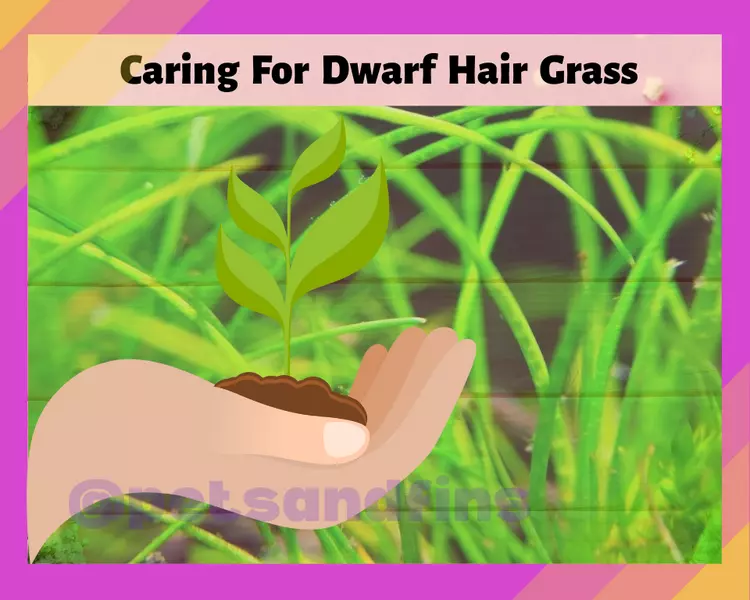
Answers To Some Common Problems
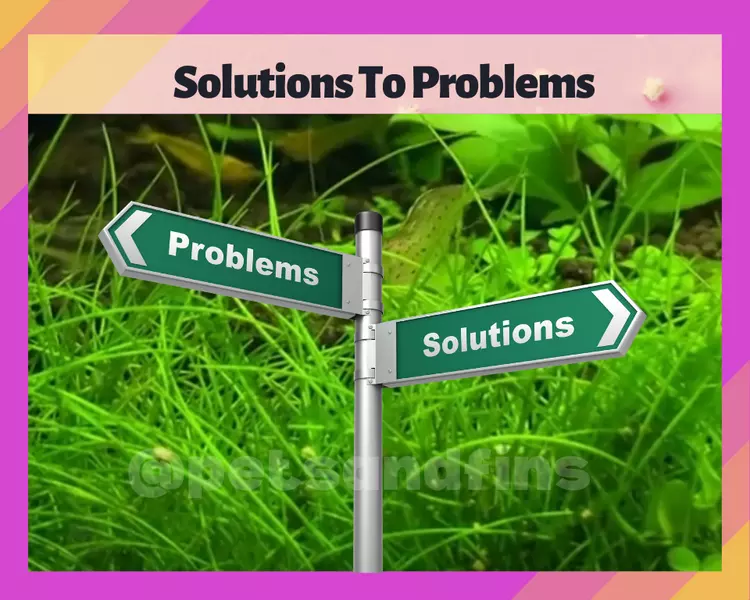
Wrapping Up:
Dwarf hair grass is a great choice for an easy-to-care aquatic plant. By following this guide, you will have a lush green carpet and a healthy ecosystem in your tank. Not only will your plants be happy, but your fish will love the extra bit of cover too!
It will help purify the water in your tank and add beauty to your tank. With a little light, nutrition, and substrate, they will do fairly well on their own and can even self-propagate.

